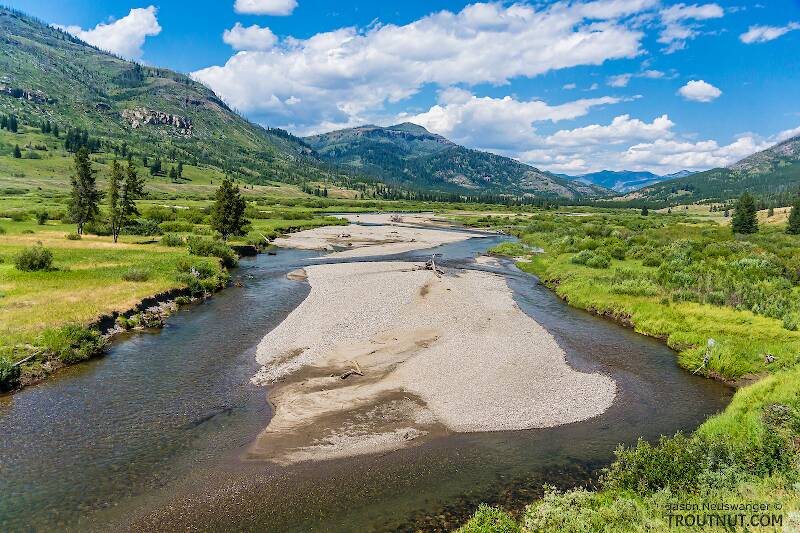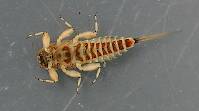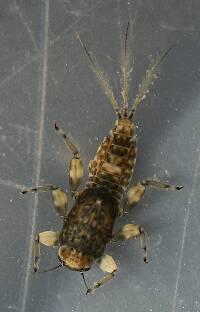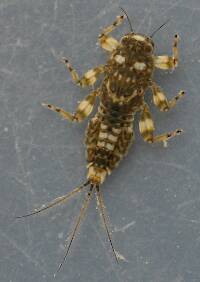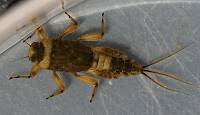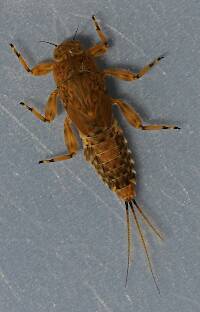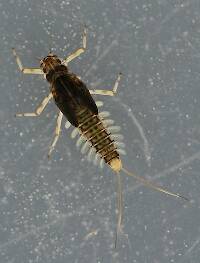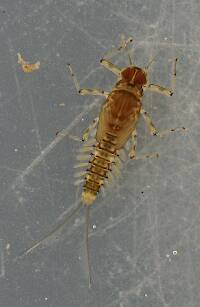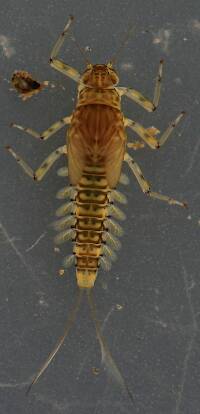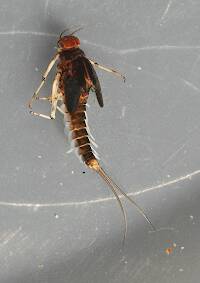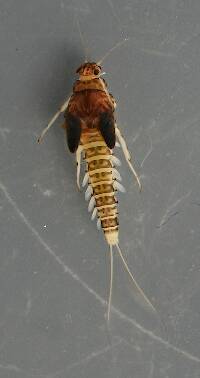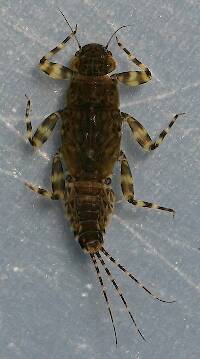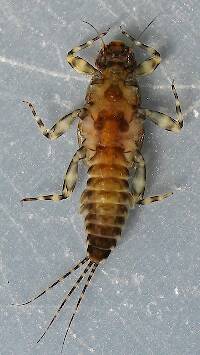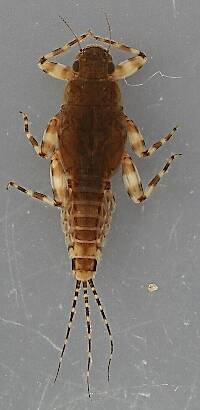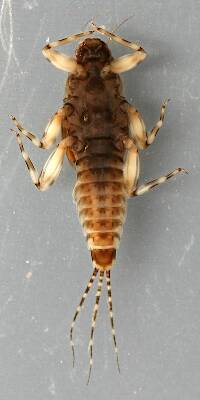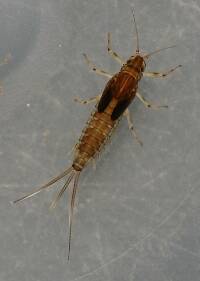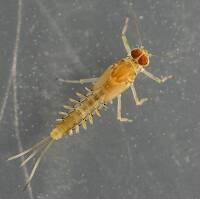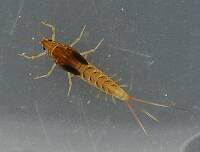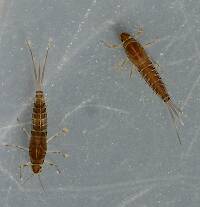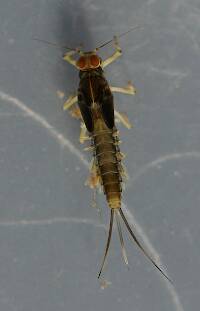
Hex Mayflies
Hexagenia limbata
The famous nocturnal Hex hatch of the Midwest (and a few other lucky locations) stirs to the surface mythically large brown trout that only touch streamers for the rest of the year.
Featured on the forum

This species was fairly abundant in a February sample of the upper Yakima.

Troutnut is a project started in 2003 by salmonid ecologist Jason "Troutnut" Neuswanger to help anglers and
fly tyers unabashedly embrace the entomological side of the sport. Learn more about Troutnut or
support the project for an enhanced experience here.
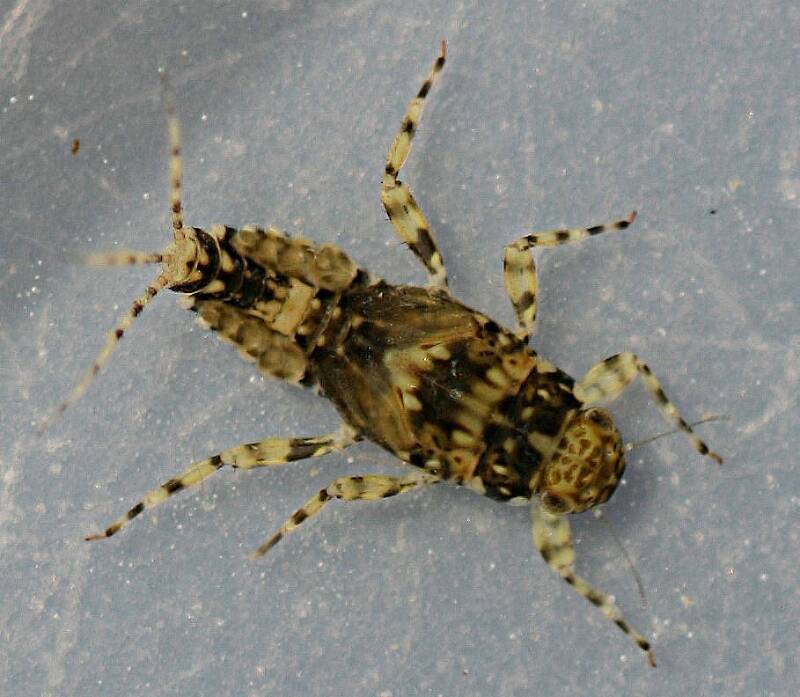
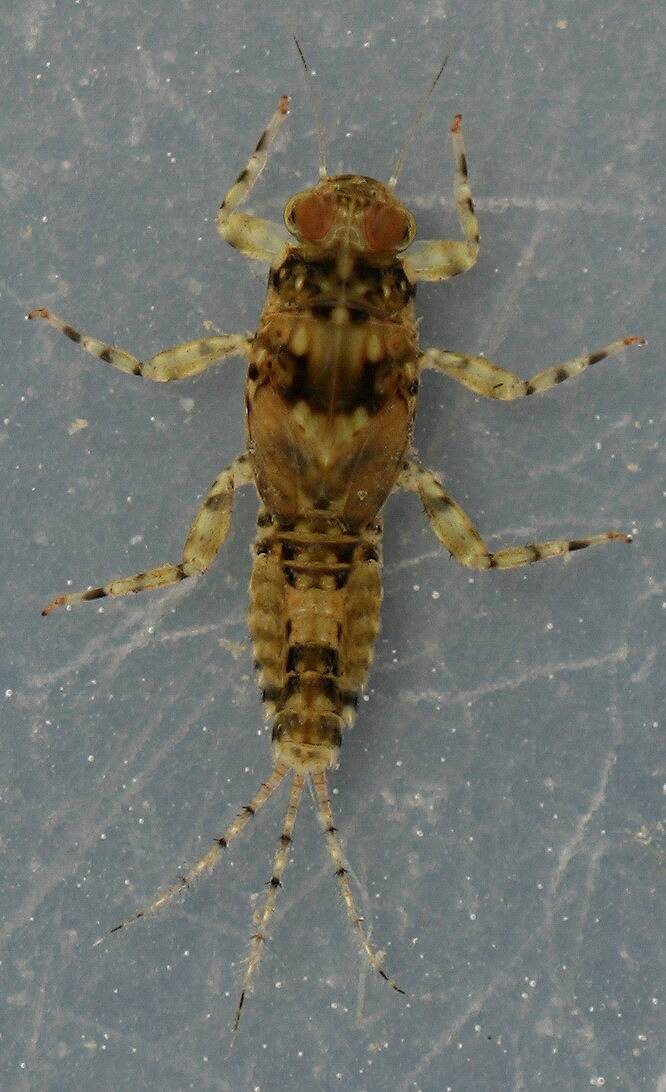
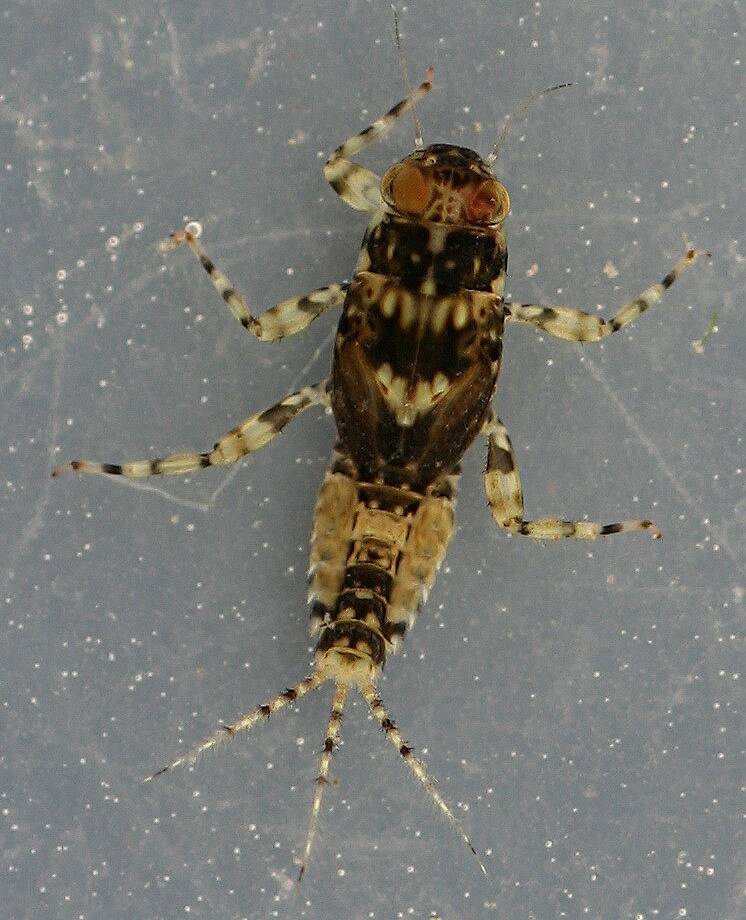
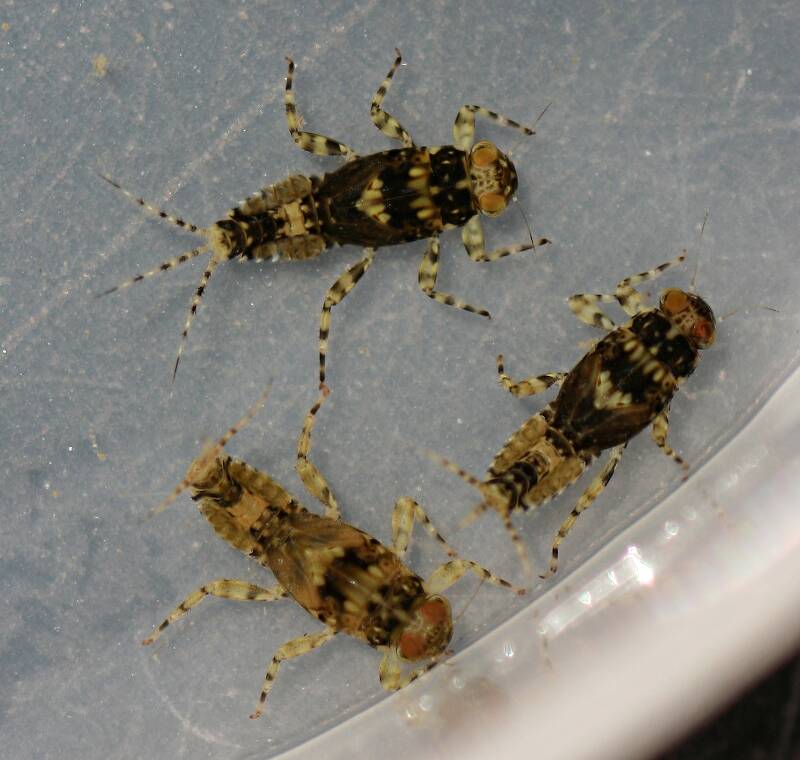
Millcreek on Oct 13, 2014October 13th, 2014, 10:13 am EDT
Serratella micheneri nymphs are common in the Russian River from April through May. Most are found in glides with a substrate of large gravel and cobble in a moderate current. Usually found in large numbers on single rocks. I ID'd them to genus using Merritt, Cummins and Berg (2008) and to species with Allen and Edmunds "A Revision of the Genus Ephemerella (Ephemeroptera: Ephemerellidae). VI. The Subgenus Serratella in North America" (1963)http://www.ephemeroptera-galactica.com/pubs/pub_a/puballenr1963p583.pdf and Jacobus and McCafferty "Revisionary Contributions to North American Ephemerella and Serratella (Ephemeroptera: Ephemerellidae) (2003)http://www.ephemeroptera-galactica.com/pubs/pub_j/pubjacobusl2003p174.pdf.
Nymphs are 5-7 mm in length (excluding cerci).
Nymphs are 5-7 mm in length (excluding cerci).
"If we knew what it was we were doing, it would not be called research, would it?"
-Albert Einstein
-Albert Einstein
PaulRoberts on Oct 13, 2014October 13th, 2014, 3:49 pm EDT
Wow! Pretty critters they are.
Millcreek on Oct 13, 2014October 13th, 2014, 4:40 pm EDT
Paul-
Yeah, they are pretty little varmints and like a lot of animals that have a pattern that's broken up like this they're really well camouflaged when in their regular habitat and not in a petri dish. Hope to get some photos of them on rocks next year.
Have you seen these in Colorado? Apparently they've been reported there, as well as a number of other western states.
Yeah, they are pretty little varmints and like a lot of animals that have a pattern that's broken up like this they're really well camouflaged when in their regular habitat and not in a petri dish. Hope to get some photos of them on rocks next year.
Have you seen these in Colorado? Apparently they've been reported there, as well as a number of other western states.
"If we knew what it was we were doing, it would not be called research, would it?"
-Albert Einstein
-Albert Einstein
Quick Reply
Related Discussions
Topic
Replies
Last Reply
2
Dec 26, 2019
by Millcreek
by Millcreek
0
Sep 26, 2020
by Millcreek
by Millcreek

